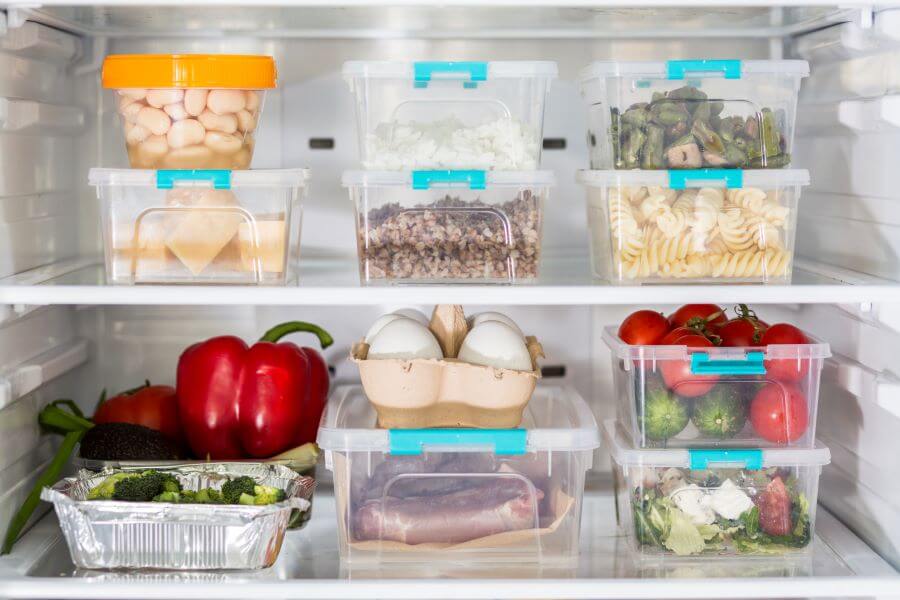GE refrigerators are among the best in the market.

This is thanks to their robust build and energy-efficient features. With Energy Star certification, they provide excellent performance while consuming less energy. Their shape allows them to serve you for years, withstanding accidental bumps, knocks, and everyday tear and wear.
While coming in a sturdy construction, they are susceptible to multiple problems, including issues with the door flap. This article examines the most common problems and offers easy-to-understand and flow solutions. So, let’s get into it.
Flap Not Closing Properly
The flap is used to close the water or ice dispenser, preventing entry of warm air into the refrigerator. If it is not closing properly, the air will enter the refrigerator compartment, obstructing the optimal cooling of your food. This can be due to several factors, such as ice buildup and misalignment.
Solution
- With the refrigerator doors open, check for any visible obstructions, such as debris and ice chunks, that might cause the flap to close incorrectly.
- In case of ice buildup, you can remove it using a plastic utensil or hairdryer set to low heat. Avoid using excess heat since it might damage other components of the refrigerator.
- Check for any visible damage to the flap or misalignment. You can realign the flap using the right tools if it is misaligned. If damaged, make sure to replace it. Remember to inspect the hinge mechanism for damage, too.
- Check whether the hinges are dry. Dry hinges cause the flap not to close correctly. Use a compatible lubricant to lubricate the hinges. Alternatively, you can use cooking oil or silicone spray.
- If the problem persists, consider consulting a technician for a thorough diagnosis.
Door leaking
Another common problem with the GE Refrigerator is a leaking door. Water or ice may leak from the dispenser. It can be due to a malfunctioning water valve, loose fittings, and damaged water supply lines.
Solution
- First, identify where the leak is coming from. Is it leaking from the top? Side? Or the bottom of the flap.
- Next, inspect the water supply lines for any visible cracks, damage, or loose fittings. If the lines are damaged or cracked, you must replace them with new ones. Use the right tool to tighten loose connections.
- Sometimes, the issue can be the ice maker. You’ll need to inspect it for visible damage or misalignment. You should also check for ice buildup; in that case, use a plastic utensil to clear it.
- Check whether the ice maker fill tube is damaged or loose. The line delivers water to the ice maker, and the door might leak in case of damage or looseness.
- You should also check the door alignment. Adjusting the alignment screws will solve the problem.
- If your GE refrigerator is not leveled correctly, it may lead to the door leaking. Use a level to adjust the leveling as needed.
- Replace the door gasket if it is worn or damaged. A damaged door gasket can cause the door to leak. Make sure to source one from the manufacturer or a trusted third-party vendor.
- Consider calling a qualified technician if the above does not solve the problem.
Flap Making Unusual Noises
The flap of your GE refrigerator might also make unusual noises over time. A common cause is worn hinges due to everyday tear and wear. Lack of lubrication can also cause the hinges to wear out. The flap may make noises if the door is misaligned since it causes it to rub against the frame.
Solution
- Identify where the noise is coming from. Is it coming from the flap or hinges? Answering this question will help you troubleshoot the problem quickly.
- Clean the flap and hinges with warm, soapy water to remove debris. Dirt and debris can cause the flap to make noise when opening or closing.
- Please also lubricate the hinges. Dry hinges are often the source of unusual noises. You can use cooking oil, silicone spray, or a recommended lubricant.
- Check whether the hinges are loose. If so, tighten them with a screwdriver.
- Inspect the flap for visible damage that might be causing the noise. If the flap is damaged, you must replace it with a new one.

Flap Not Opening
Another common problem with GE refrigerators is the flap not opening or closing automatically. Several factors cause the flap to malfunction. For example, a faulty door switch may send the wrong single, causing the flap to remain shut. The same case applies to a defective damper.
Solution
- Check whether the power outlet where the refrigerator is plugged in is working correctly. If the unit is not receiving ample power, the flap may not open or close automatically.
- Check whether the door switch is faulty. It would help if you used a multimeter to test its continuity. If the resistance and voltage registered are not within the set range, consider replacing the door switch.
- After checking the switch, check the damper for any visible damage. Unplug the refrigerator from the power source when examining the drag.
- To test the damper, open the fresh food door while the freezer door is closed. The damper should open automatically. Otherwise, replace it with a new one.
- Clean the flap and hinges since dirt and debris might cause the flap not to open or close automatically.
- Lubricate the dry hinges for smoother closing and opening of the flap.
- Also, consider resetting the refrigerator. A simple reset can solve the problem.
Flap Damaged
Flap damage is arguably the most common problem with GE Refrigerator French doors. Cracks and damage can be caused by several factors, among them accidental bumps and knocks. Besides, manufacturing defects are common with damaged flaps. Everyday tear and wear can also damage the flap.
Solution
- First, identify the type of damage to the flap. Is it cracked? Bent? Are you perhaps torn? Knowing which damage affects the flap can help you take the correct repair route.
- Before repairing the flap, make sure to clean the damaged area. This will help the sealant or patch to attach tightly to the flap.
- Apply a compatible repair product. You can refer to the user manual to determine which repair products you should use. A sealant or a patch will help, depending on the scale of damage.
- Ensure the sealant is dry or the patch has been appropriately attached to the flap.
- If the damage is beyond repair, consider replacing the flap with a new one. You can buy replacement products from the manufacturer or a third-party vendor.

Final Thoughts
As you can see, the GE French Door Refrigerator has many door flap problems. It may not close properly, produce unusual noises, and close automatically. Fortunately, resolving this issue is straightforward.
You only need to identify the problem and what’s causing it, and you are good to go. Make sure to buy repair products from trusted third-party vendors or GE. And if you need to be more conversant with troubleshooting, consult a technician.
